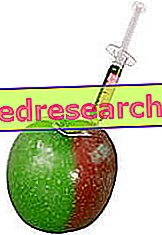Definition
Barrett's esophagus is a precancerous disease that affects the esophagus, sometimes damaging it permanently: due to repeated acid insults, the normal tissue that lines the esophagus internally is replaced by an epithelium similar to that of the duodenal walls (metaplasia of the esophageal epithelium).
Causes
Barrett's esophagus is the most feared complication of esophagitis and gastroesophageal reflux disease in general: the continuous rise of acid gastric juice from the stomach to the esophagus can generate erosion as it becomes more serious, irreversibly modifying the esophageal epithelium until it degenerates into Barret's disease.
Other risk factors for the Barret esophagus: alcoholism, hiatal hernia, advanced age, obesity / overweight, genetic predisposition, male sex, smoking.
Symptoms
The typical symptoms of Barret's esophagus are almost the same as those of gastroesophageal reflux disease: retro sternal burning, dysphagia, frequent regurgitation to the mouth, pharyngitis, blackish stools with blood (borderline cases), chronic inflammation of the vocal cords, and even ulcerative lesions in the last section of the esophagus, gastric pyrosis and odinophagy.
Information on Barrett's Esophagus - Drugs for the Treatment of Barret's Esophagus is not intended to replace the direct relationship between health professional and patient. Always consult your doctor and / or specialist before taking Barrett's Esophagus Esophagus Treatment Barret Esophagus.
drugs
In addition to treating Barrett's esophagus, the drugs are aimed at controlling the typical symptoms of gastroesophageal reflux: however, the main goal is to restore the physiological squamous epithelium of the esophagus, modified by the progressive corrosion of the wall cells :
NB in case of non-dysplasia, drug therapy to treat Barrett's esophagus is the same as for gastroesophageal reflux disease
Proton pump inhibitors : they are able to reduce gastric acidity, responsible for irritation of the mucous membrane of the esophagus and the stomach.
- Dexlansoprazole (eg Dexilant): in the case of erosive esophagitis, we recommend the initial administration of 60 mg a day for 8 weeks, and then continue with maintenance therapy by taking 30 mg of active ingredient a day for six months. In this way, Barrett's esophagus, the most dangerous complication, is prevented. Similarly, in the case of gastroesophageal reflux disease with possible degeneration in Barrett's esophagus, it is recommended to administer 30 mg of active ingredient once a day for 4 weeks.
- Esomeprazole (eg Lucen, Nexium): it is recommended to take 30 mg of drug per day for 8 weeks; alternatively, administer 30 mg of active ingredient parenterally for 7 days (duration of infusion: 30 minutes). Useful for the prevention of Barrett's esophagus.
- Pantoprazole (eg. Peptazol, Pantorc, Nolpaza, Gastroloc): this drug is also recommended to control the symptoms of gastroesophageal reflux, in order to avoid a possible degeneration in Barrett's esophagus. In this sense, administer 40 mg of active ingredient per day for a period varying from 7 to 10 days (intravenously for a period of 15 minutes). If the patient is able to swallow, the drug can also be taken by mouth (40 mg for 8 weeks).
Histamine H2 antagonist receptors
Histamine, by binding to H2 receptors, stimulates the proton pump by activating the adenylate cyclase. The drug, preventing this stimulus on the proton pump, prevents the formation of HCl
- Nizatidine (eg. Nizax, Cronizat, Zanizal): the dose of 150 mg of active ingredient is recommended twice a day. For children who are already one year old and suffer from gastroesophageal reflux disease, it is recommended to administer 10mg / kg per day, divided into two doses, for 8 weeks. If the child is aged between 4 and 11, the recommended dose drops to 6 mg / kg per day, divided into two doses. The administration of the drug is recommended to prevent the degeneration of the esophageal epithelium: this drug, decreasing the acidity of the gastric juices, avoids the worsening of the symptoms and, at the same time, is useful in the prophylaxis of metaplasia of the esophageal wall.
Eventually, in case of vomiting associated with Barrett's esophagus, the doctor may prescribe antiemetics, to avoid worsening the clinical picture. The drug must be established by the doctor, based on the severity of the patient's problem.
Alternative therapies to treat the Barret esophagus t
When Barrett's esophagus is characterized by dysplasia (even slight), drug therapy is not sufficient; therefore it is necessary to resort to alternative therapies (based on the seriousness of the problem):
- surgical removal of abnormal tissue
- laser
- radiofrequency ablation
- removal of damaged tissue with endoscopic instruments
- photodynamic therapy
- Removal of the entire portion affected by Barrett's esophagus (and subsequent sewing of the remaining portion with the mouth of the gastric cavity)



